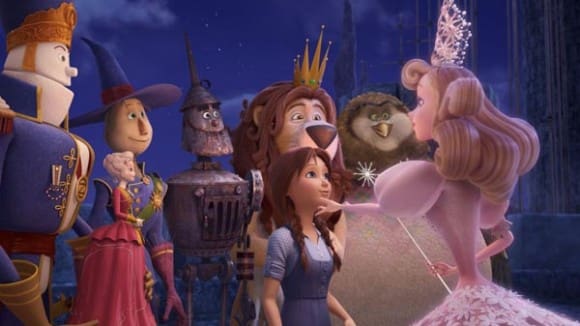That life is energy, is evident. What is equally evident is the truth that life-energy, or prana, flows in many channels: the energy of dance, of music, of thought, and of literature; and also the energy at the stock exchange. It assumes many forms: the energy in earth and in water, and the energy of the human mind and of the human heart.
The post Paradox of Energy appeared first on OUPblog.

Now that Disney’s Oz The Great and Powerful is a box office hit, let the Wizard of Oz remakes commence.Variety reports that Clarius Entertainment will theatrically release the 3-D CGI pic Legends of Oz: Dorothy’s Return in the first quarter of 2014. We posted the film’s trailer last fall, back when the film was called Dorothy of Oz, and the reaction was tepid.
The film is inspired by L. Frank Baum’s Wonderful Wizard of Oz as well as an Oz book series written by his great-grandson Roger Stanton Baum. Daniel St. Pierre (Everyone’s Hero) and Will Finn (The Road to El Dorado, Home on the Range) directed the film through Summertime Entertainment, and Bonne Radford produced with Summertime co-founders Ryan and Roland Carroll. Indian animation studio Prana (Hoodwinked! and Disney’s Tinker Bell movies) handled the animation production.
Mark Singleton teaches at St. John’s College, Santa Fe, New Mexico. He is the editor, with Jean Bryne, of Yoga in the Modern World: Contemporary Perspectives. In his new book, Yoga Body: The Origins of Modern Posture Practice, he questions commonly held beliefs about the nature and origins of postural yoga and suggests a radically new way of understanding the meaning of yoga as it is practiced by millions of people across the world today. In the excerpt below, Singleton introduces the reader to Hatha Yoga.
The techniques and philosophical frameworks of the Saiva Tantras form the basis for the teaching of hatha yoga, which flourished from the thirteenth century CE and which entered its decline in the eighteenth…The term hatha means “forceful” or “violent,” but it is also interpreted to indicate the union of the internal sun (ha) and moon (tha), which symbolically indicates the goal of the system…As Mallinson…has noted, the corpus of hatha yoga is not doctrinally whole and does not “belong” to any one single school of Indian thought. It is nevertheless closely associated with Goraksanãth and his teacher Matsyendranãth, who is credited with founding the Saiva Nãth sampradãya (twelfth century CE?). In practice, however, there was a high level of orthopractical and organizational fluidity between the Nãths (also called Kãnphata, or “split eared”) and other yoga-practicing groups. The yoga-practicing tyãgis of the Vaisnava Rãmãnandis, for example, were closer to the Nãths in terms of ritual and religious experience than to their devotionally inclined (rasik) Rãmãandi brethen…; close organizational trade ties obtained between Nãths, Sufi fakirs, and Dasnãmi samnyãsins, and there was a great deal of interchange between these various groups…; and at least until the late 1800s, Nãth yogins recruited novitiates without regard for caste or religion, attracting many Muslim yogins into their fold…This all contributed to a permeability among hatha yoga practicing groups.
The earliest of the well-known texts of hatha yoga is probably Goraksa Sataka (GS), ascribed to Goraksanãtha, followed by Siva Samhitã (SS, fifteenth century CE), Hathayogapradipikã (HYP, fifteenth-sixteenth century), Hatharatnãvali (HR, seventeenth century), Gheranda Samhitã (GhS, seventeenth-eighteenth century CE), and the Jogapradipakã (JP, eighteenth century). As Bouy (1994) has shown, hatha yoga techniques aroused much interest among the followers of Sankara’s advaita vendãnta, and a number of texts from Nãth literature were assimilated wholesale into the corpus of 108 Upanisads compiled in South India during the first half of the eighteenth century. Mallinson…has demonstrated that the orthodox vedãntin bias of these compilers resulted in the omission of some key aspects of Nãth hatha yoga, such as the practice of khecarimudrã. As we shall see, a similar process of omission occurred during the modern hatha yoga revival. Since many of the ãsana systems considered in this study purport to derive from, or to be hatha yoga, a brief examination of the main features of its doctrines and practices is in order…
Hatha yoga is concerned with the transmutation of the human body into a vessel immune from mortal decay. GhS compares the body to an unbaked earthenware pot which must be baked in the fires of yoga to purify it a



